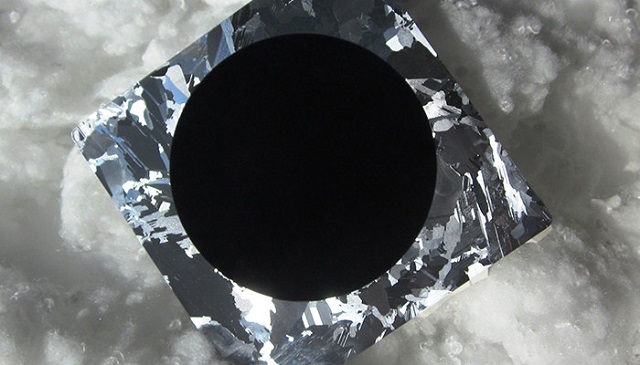 The development of the cells fabricated last year will continue in the upcoming “BLACK” project in which Professor Savin together with her team will develop the technology further in cooperation with industry.
The development of the cells fabricated last year will continue in the upcoming “BLACK” project in which Professor Savin together with her team will develop the technology further in cooperation with industry.
Researchers from Aalto University and the Universitat Politècnica de Catalunya have achieved a record-breaking 22.1% efficiency on nanostructured silicon solar cells. The Fraunhofer ISE CalLab has certified this record efficiency.
The researchers used atomic layer deposition for the application of a thin passivating film on the nanostructures and combined metal contacts at the rear side of the cell to enable this 4% increase in comparison with their previous record. The efficiencies of black solar cells have been curtailed to modest values due to surface recombination, which has also prevented its development.
The new cells have a thick back-contacted structure. This structure is very sensitive to front surface recombination. At 300nm wavelength, the black silicon solar cells demonstrate certified 96% external quantum efficiency. This efficiency shows that the problem of increased surface recombination has been overcome and that it has become non-existent. Furthermore, it also shows that the final energy conversion efficiency has not been limited.
Professor Hele Savin from the Aalto University has coordinated this study. Savin states that apart from the energy conversion efficiency, other parameters should be considered.
Black cells have the ability to capture solar radiation even from low angles. Hence, when compared to traditional cells they have the ability to generate more electricity.
For a larger part of the year in the north, the sun shines from a low angle. In Helsinki, under winter conditions, the researchers had shown that black cells could generate more electricity when compared to conventional cells, though both cells demonstrate equal efficiencies.
The research team intends to utilize this technology for other cell structures such as thin and multi-crystalline cells.
Our record cells were fabricated using p-type silicon, which is known to suffer from impurity-related degradation. There is no reason why even higher efficiencies could not be reached using n-type silicon or more advanced cell structures.
Hele Savin
The European Union is supporting the upcoming “BLACK” project, where further development of the cells created previously will be continued. Professor Savin and her team would be collaborating with the industry to advance this technology further as part of this project.
In this study, the best cells had a surface area of 9cm2. This is a considerable achievement and could be used to scale up to full wafers, and later on to the industrial scale.
The results of this study have been published as a paper titled, “22.1% efficient black silicon solar cells with interdigitated back-contacts” in Nature Nanotechnology.
References